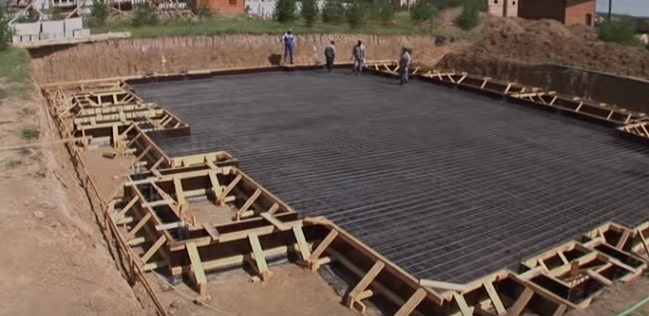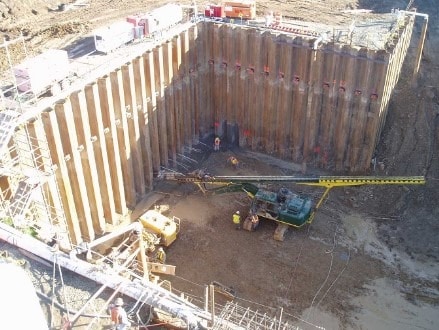Floating Foundations – Principles, Suitability and Construction Difficulties
What is a Floating Foundation?
A foundation is laid on ground by excavating some amount of soil. After that, a structure is built on it. In case of floating foundation, the weight of structure built on the soil is nearly equal to the total weight of the soil (including water in the soil) excavated from the ground before the construction of structure.

Principle of Floating Foundation
The main principle of floating foundation is to balance the weight of removed soil by a structure of same weight which causes zero settlement to the structure. So, this foundation is also called as balancing raft foundation.

Let’s consider a ground with water table at the top as shown in the above picture. The ground is excavated up to certain depth which is below water table. Now in the next step, a building is constructed which is as same weight as of the removed soil and water.
Even the depth of excavation is below the table the total vertical pressure in the soil below the foundation is unchanged because of its balancing weight. But here one point is to be noted that we cannot build a structure immediately after the excavation.
During the time of construction, the effective vertical pressure under the depth of excavation may slightly increase because of unbalancing weight. So, this type of foundations can also be called as partly compensated foundations instead of fully floating or compensated foundations.
Suitability of Floating Foundations
Floating foundations are desirable for the following types of soils:
- Soils which are having good shear strength but having a problem of large settlements and differential settlements under heavy loads. In which case, floating foundation can reduce the settlement values to greater extent.
- Soils which are having low shear strength and there is no hard layer of soil at reasonable depth. Here also, floating foundation helps to reduce the shear stresses to satisfactory level and hence settlement is prevented.
Difficulties in Construction of Floating Foundation
During the construction of floating foundation some problems may arise which can be prevented by taking proper care. The problems will arise during
- Excavation
- Dewatering
- Critical depth
- Bottom heave
Excavation
The excavation for floating foundation should be done carefully. The walls of excavated part should be supported using sheet piles or timber piles or soldier piles etc.

Dewatering
If the depth of the excavation is below the water table then dewatering is essential. It is better to examine the water table level prior to the excavation. Dewatering should be done cautiously otherwise it may cause lowering of water table which disturbs the adjoining structures.

Critical Depth
If the soil is of low shear strength as specified above, there is a limit to the depth of excavation which is known as critical depth. There are two equations are available to determine critical depth of excavation given by Terzaghi and Skempton respectively.
1) Terzaghi equation for the critical depth is:
Where,
Dc = critical depth
s = shear strength of soil
B = width of foundation (if width is less than length of foundation “L”)
2) Skempton’s equation for critical depth is
Where Nc = Skempton’s bearing capacity factor.
By using any one the above two equations, the critical depth or maximum depth of excavation can be determined.
Bottom Heave
When the soil is excavated up to some depth, the pressure of the soil below this depth is lowered which results the formation of heave. The formed heave causes settlement to the structure or foundation. We cannot prevent the formation of heave but there are some methods to minimize the formation of heave.

Excavating narrow trenches and filling them with concrete soon after the excavation minimizes the heave formation. Installing friction piles before excavation or after the completion of half excavation can also prevents the formation of heave. By lowering water table also, it can be minimized. To prevent the heave formation in the side walls of excavated trench, lateral supports should be provided.
No comments:
Post a Comment